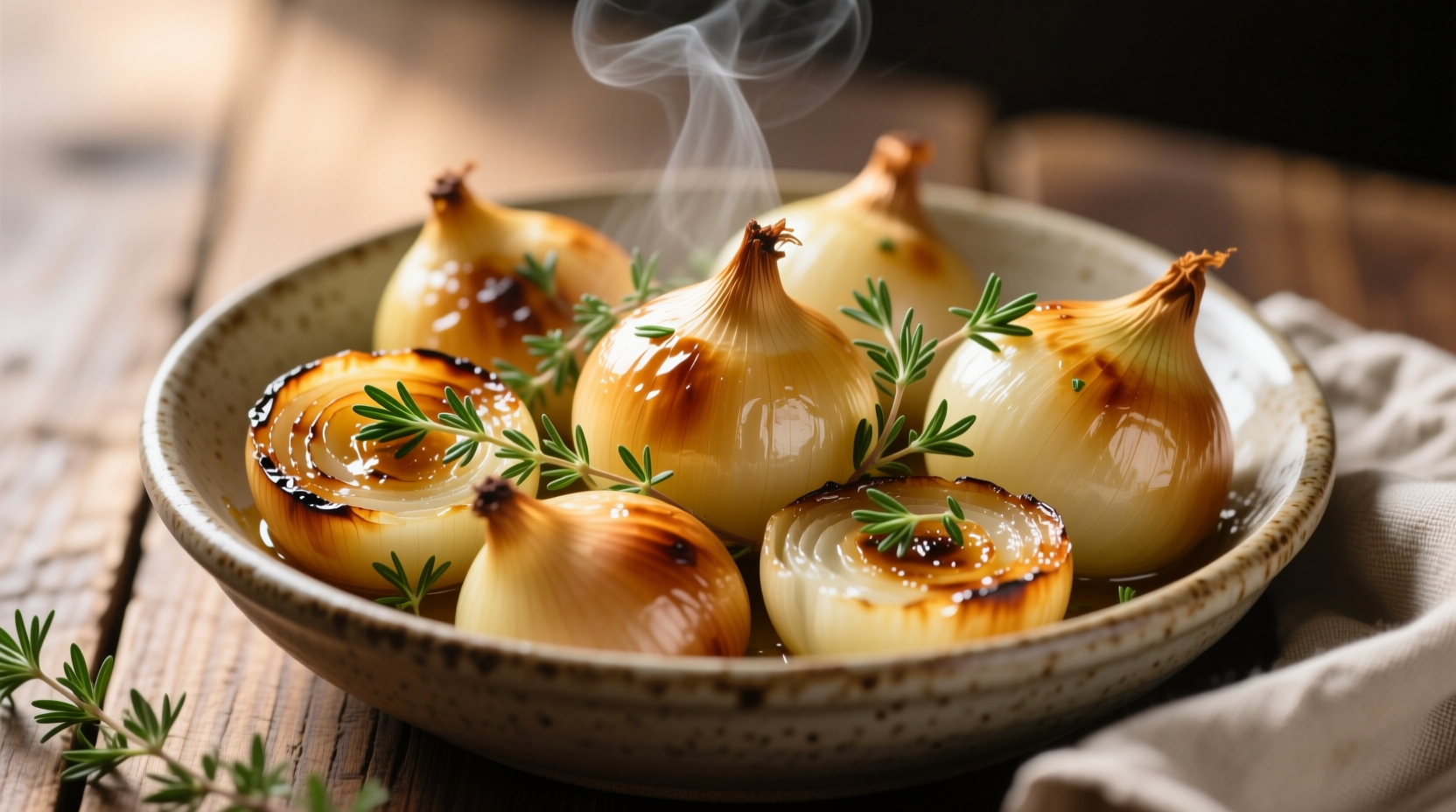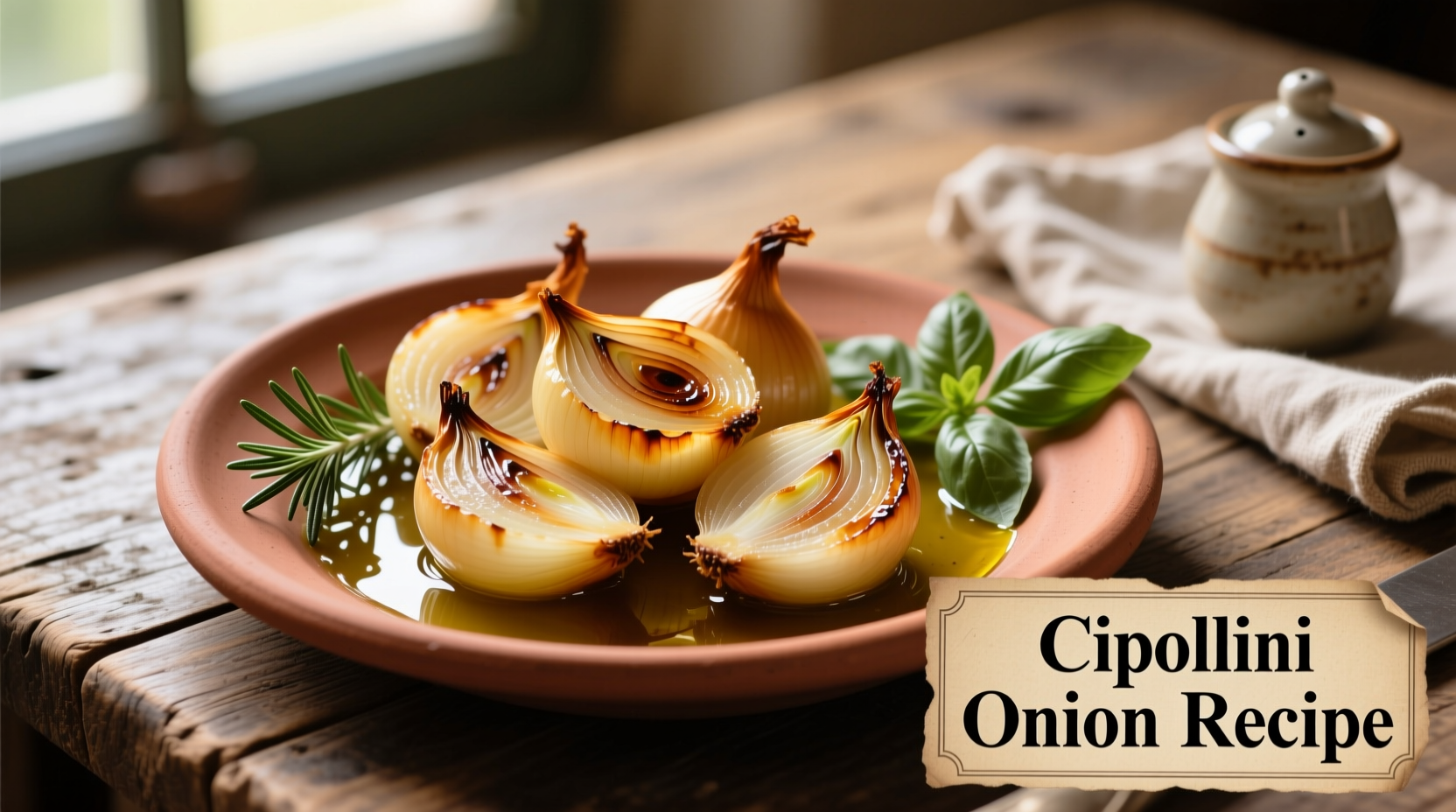Often called "flat onions" or "Italian pearl onions," cipollini onions (Allium cepa var. aggregatum) offer a unique culinary advantage: their layered structure holds shape during cooking while developing complex sweetness. Unlike regular onions that disintegrate when caramelized, cipollini maintain a tender-but-substantial texture ideal for elegant side dishes and gourmet applications.
As Antonio Rodriguez explains from his Michelin-starred kitchen experience, "Cipollini's high sugar content and low moisture make them the only onion variety that caramelizes in under 20 minutes without turning to mush. Their natural shape creates perfect 'cups' for holding sauces and herbs."
What Makes Cipollini Onions Special
These small, flattened onions (typically 1-2 inches in diameter) originated in Italy's Tuscany region and have been cultivated since the 15th century. Their distinctive disc shape and pale gold skin set them apart from common yellow onions and pearl onions.
| Onion Variety | Shape | Sugar Content | Best Cooking Method |
|---|---|---|---|
| Cipollini | Flat disc (1-2" diameter) | 12-14% Brix | Roasting, caramelizing |
| Pearl | Round (0.5-1" diameter) | 8-10% Brix | Boiling, pickling |
| Yellow | Round globe | 5-7% Brix | Sautéing, soups |
According to USDA agricultural research, cipollini's higher sugar concentration (12-14% Brix compared to 5-7% in yellow onions) creates superior caramelization with less cooking time. Their dense layers also contain more fructose, which caramelizes at lower temperatures than sucrose.
Essential Preparation Techniques
Proper preparation prevents the common frustration of burnt exteriors with raw interiors. Follow these professional chef techniques:
- Peeling hack: Cut 1/4" off top and bottom, then make a shallow "X" incision on the root end. Blanch in boiling water for 60 seconds, then transfer to ice water. Skins will slip off easily.
- Uniform sizing: Group onions by size (small, medium, large) since they cook at different rates. Discard any with green sprouts.
- Oil application: Toss in olive oil first, then season. Oil creates a barrier that prevents salt from drawing out moisture too quickly.
As documented in the USDA Agricultural Research Service's Allium Varieties Database, cipollini's tight skin layers contain higher concentrations of quercetin glycosides than other onions, which provides natural protection during cooking but requires proper peeling technique.
Perfect Roasted Cipollini Onions Recipe

This restaurant-quality method delivers caramelized exteriors with tender, sweet centers in just 25 minutes. Serves 4 as a side dish.
Ingredients
- 1 lb (about 15-20) cipollini onions, peeled
- 3 tbsp extra-virgin olive oil
- 1½ tbsp balsamic vinegar
- 1½ tsp honey or maple syrup
- 1½ tsp fresh thyme leaves
- ¾ tsp sea salt
- ¼ tsp black pepper
Step-by-Step Instructions
- Prep onions: Trim root and stem ends. Make a shallow "X" incision on root end of each onion.
- Blanch: Submerge in boiling water for 60 seconds, then transfer to ice bath. Slip off skins.
- Season: In large bowl, combine onions, olive oil, balsamic, honey, thyme, salt, and pepper. Toss gently.
- Rosemary placement: Position onions cut-side down on parchment-lined baking sheet. Tuck whole rosemary sprigs between onions.
- Roast: Bake at 400°F (205°C) for 22-25 minutes until deeply golden and tender when pierced with fork.
- Glaze: Drizzle with pan juices and additional ½ tbsp balsamic. Serve immediately.
Pro Tip: For restaurant-style presentation, arrange onions in concentric circles on serving platter with rosemary sprigs. The natural cup shape holds the balsamic reduction beautifully.
Advanced Cooking Applications
Cipollini's unique structure makes them ideal for specialized preparations:
Cipollini Onion Tarts
Thinly slice onions horizontally (¼" thick) to create natural rings. Layer in pre-baked tart shell with goat cheese and caramelized shallots. Bake at 375°F until golden (18-20 minutes).
Grilled Cipollini Skewers
Thread peeled onions onto soaked skewers. Brush with olive oil and grill over medium heat (350°F), turning every 3 minutes until charred and tender (12-15 minutes total).
Preservation Methods
Unlike regular onions, cipollini maintain texture when preserved:
- Pickling: Simmer in equal parts vinegar/water with 10% sugar for 5 minutes
- Freezing: Blanch 90 seconds, freeze on tray, then transfer to bags (keeps 10 months)
- Drying: Dehydrate at 135°F for 8-10 hours for intense flavor concentrate
Storage & Substitution Guide
Fresh storage: Keep in mesh bag in cool, dark place (55-60°F) for up to 3 months. Never refrigerate whole cipollini as moisture causes spoilage.
Substitutions when unavailable:
- For roasting: Use small yellow onions (halved) with 20% extra cooking time
- For pickling: Pearl onions work better due to similar size
- For tarts: Shallots sliced horizontally maintain ring structure
According to the University of California Cooperative Extension's Allium Storage Guidelines, cipollini's lower moisture content (78% vs 89% in yellow onions) gives them superior storage longevity but makes them more susceptible to drying out if stored above 65°F.
Frequently Asked Questions
Can I use frozen cipollini onions for roasting?
Yes, but thaw completely first and pat dry. Frozen cipollini work best for soups and stews rather than roasting, as the texture becomes softer. For roasting, fresh cipollini deliver superior caramelization and texture.
Why do my cipollini onions burn before becoming tender?
This happens when cooking at too high temperature. Cipollini require moderate heat (375-400°F) to caramelize properly. Their high sugar content burns easily above 425°F. Always roast cut-side down to protect the delicate layers.
How do I prevent cipollini onions from falling apart during cooking?
Leave root end intact during peeling and only trim the very tip. The root fibers hold layers together. Also, avoid overcrowding on baking sheet - space onions at least ½" apart to allow proper air circulation and even cooking.
Are cipollini onions sweeter than Vidalia onions?
Cipollini have higher fructose content (which tastes sweeter to humans) but lower overall sugar than Vidalias. Cipollini measure 12-14% Brix versus Vidalia's 15-16%, but cipollini's flavor profile is more complex with subtle nutty notes that Vidalias lack.











 浙公网安备
33010002000092号
浙公网安备
33010002000092号 浙B2-20120091-4
浙B2-20120091-4